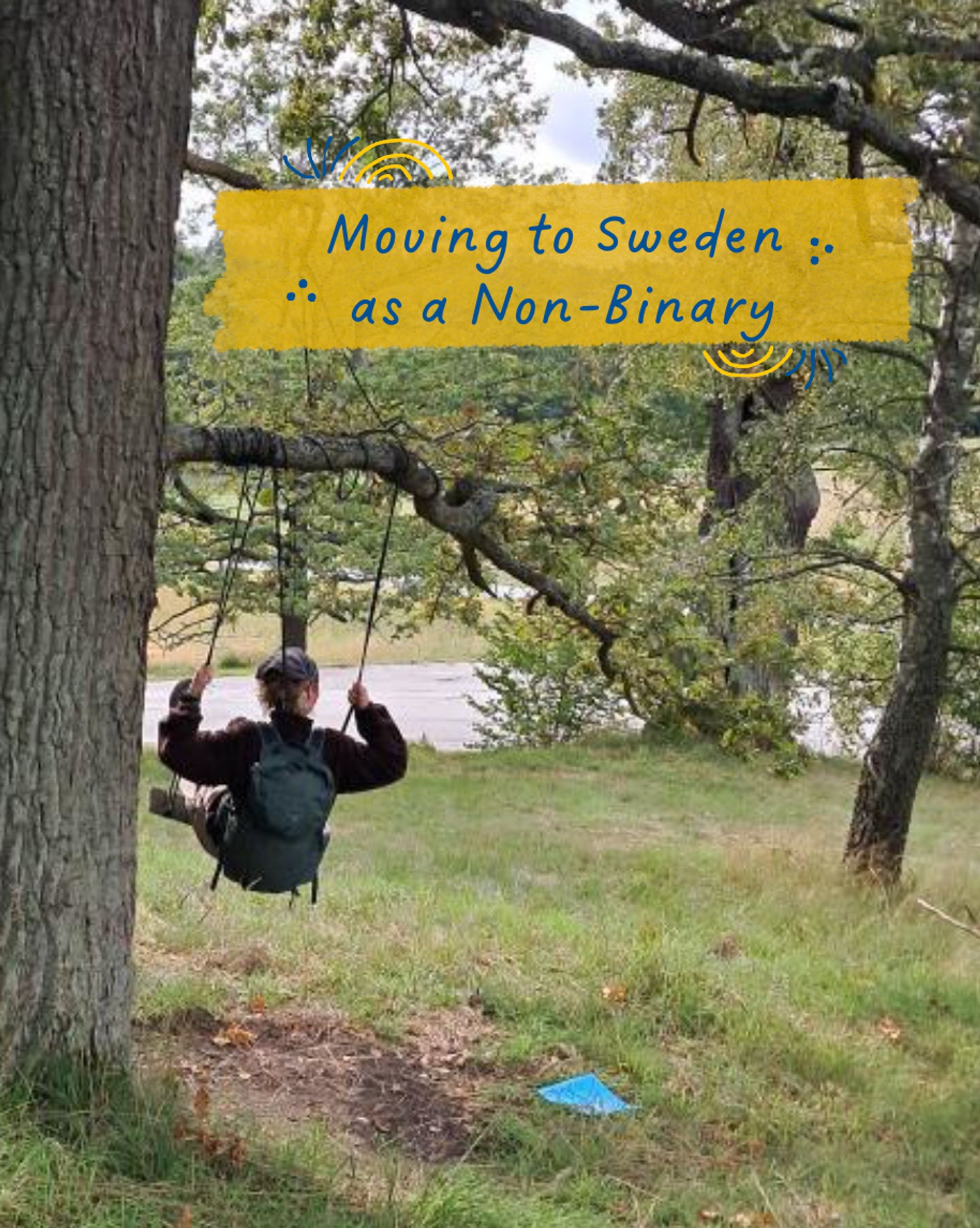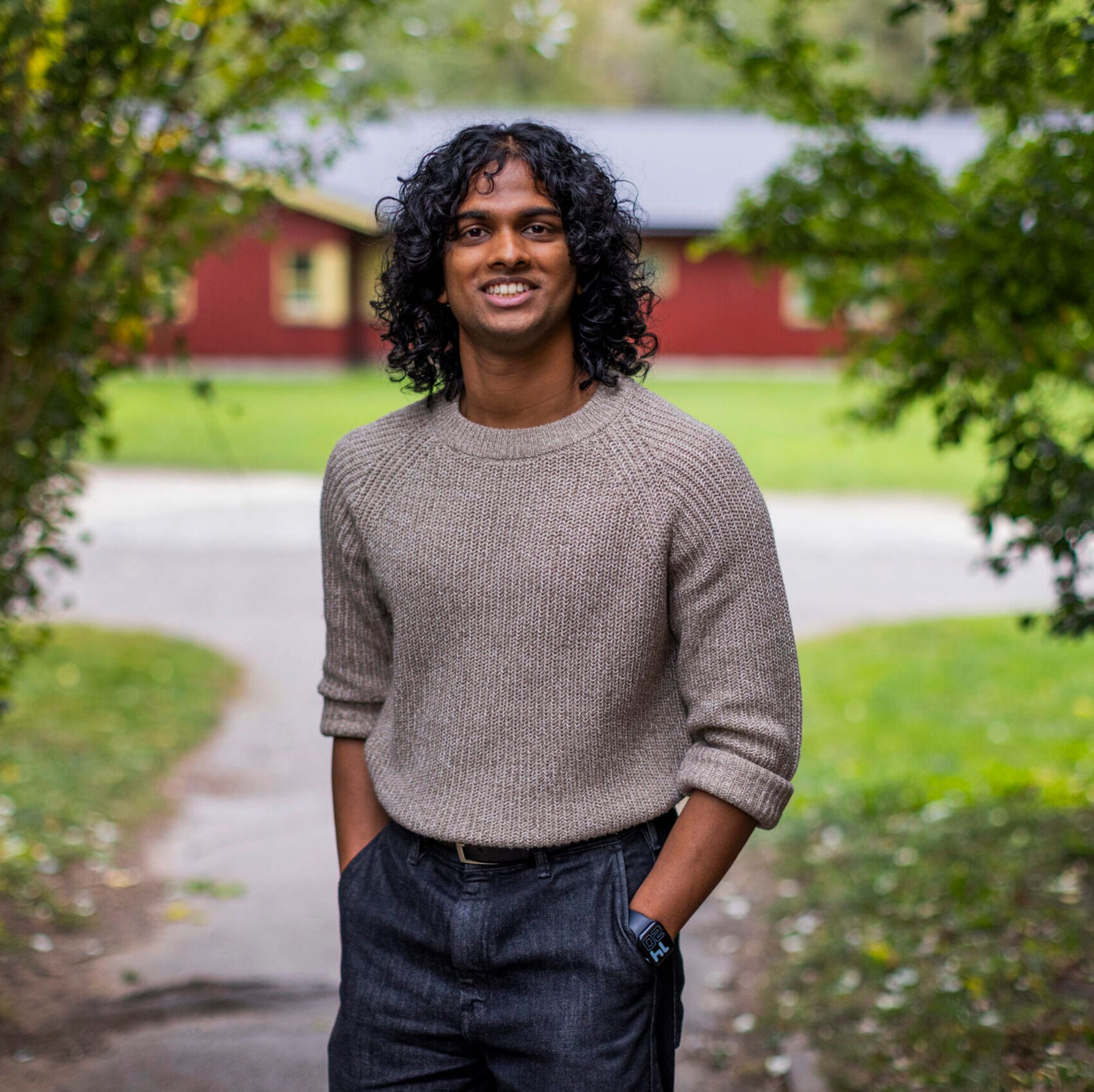
Written by Maël
24 Oct 2025
Coming from Berlin — a city that thrives on freedom and individuality — I felt both excited and nervous about moving somewhere new. Berlin has a certain energy; you can be anyone, wear anything, and people barely blink. So when I decided to move away, I carried a mix of excitement and quiet fear. Stepping into another country’s culture, even one known for its openness, always carries a quiet question: Will I still feel like myself there?
Like many, I had a few stereotypes in mind about Sweden. I pictured a country that had mastered gender equality, where social progress was woven into the fabric of everyday life. Sweden’s reputation for inclusivity is strong, and in many ways, well earned. A modern society where everyone’s voice matters. This image got fostered even more when I had taken a Swedish class in Berlin, and my teacher had introduced me to a little detail: the Swedish language includes a gender-neutral pronoun, hen, alongside hon (she) and han (he). That small word felt like a big sign that this country was going to be thoughtful about identity and inclusion.
So, I arrived with high hopes that Sweden — and especially Stockholm — would be a place where I could truly be myself without hesitation.
When Expectations Meet Systems
That’s why I was surprised, and honestly quite disappointed, when I started my university application and realized I could only choose between “male” and “female.” I sat there staring at the form, searching for an “other” option hidden in a dropdown menu, but there wasn’t any. Just a simple binary choice that doesn’t fit for up to 3% of the population. For a country known for its progressiveness, this felt like a painful step backward. I had imagined a country so modern that its systems would automatically reflect its values. Instead, I realized that even progressive societies have bureaucratic structures that move slowly.
When I brought it up after being accepted, my study counsellor was kind and understanding. She did some research, and gave me information about gender change at the university, as well as some tips on what to look out for in other Swedish bureaucracy encounters. My study counsellor furthermore explained that official documents must match what’s on government records, and that’s what filters into things like course lists or attendance sheets. That means, depending on your situation, the first roll call of the semester or the course might not sound exactly like you — but the people behind the process often are more flexible than the system itself: Most of my teachers have been thoughtful. When asked, they’ve used the correct names and language without hesitation. Sweden’s culture of respect really shows up in those small everyday moments.
That said, it can be exhausting to “come out” again and again — to have to explain yourself in every new setting. It’s a reminder that even in places with strong reputations for equality, systems often lag behind lived reality. Still, what I’ve found here is that people themselves tend to meet you halfway, even if the paperwork doesn’t.
The Challenge of Paperwork
One of the most important — and frustrating — steps when settling in Sweden is applying for a personnummer, the personal identification number that you need for almost everything. It’s your key to renting an apartment, opening a bank account, or signing up for healthcare – you will need it, even for a gym membership.
And, just like with the university forms, the choices on that application were limited. It was another wave of frustration, because the personnummer is so central to life in Sweden that you can’t really function without it. For non-binary people, this means being forced once again into a binary system just to exist within it. It can feel disheartening to see such a progressive country still relying on systems that don’t yet reflect everyone’s reality. But it’s also a reminder that bureaucracy often trails behind culture — and culture behind lived experience.
The good news is that, day to day, people are what make the difference. Sweden’s social culture emphasizes fairness and respect for others’ personal space. That can feel refreshing when you’re navigating a new environment. Even if the official forms don’t allow for much flexibility, the people you meet often will.
Promoting Gender Neutrality in Everyday Life
The everyday side of living here also reveals many positive aspects. One of the things I’ve noticed is how the everyday culture and policy in Sweden support gender neutrality and equality. For example, the parental leave system is explicitly “gender-neutral”: since 1974, the leave benefit has been available regardless of “mother” or “father”, so both parents legally have the right to take paid time off to care for a new child. The idea is to de-link parenthood from fixed gender roles, enabling both people in a relationship to have the same rights and responsibilities. Further, the broader policy framework emphasises that everyone — irrespective of gender — should have the possibility to combine work, family life and caregiving responsibilities.
Beyond that, in schools, workplaces and public institutions there is a strong emphasis on equality: for example, employer discrimination on the basis of gender has been illegal for decades in Sweden. When it comes to public buildings and shared spaces, I’ve seen more facilities labelled or designed with inclusivity in mind. For example: gender-neutral restrooms, or at least single‐occupancy unisex ones. It may sound like a small thing, but finding toilets and changing rooms that are labelled or open to “all genders” (or unlabelled in a way that feels inclusive) shifts your sense of being seen. Sure, it doesn’t solve every issue and there are places where only “Herr” and “Dam” signs still hang. But the fact that the inclusive option is visible, normal, shows something — that the conversation is already in motion.
A New Legal Gender Recognition Act & What It Means
A significant moment came in July 2025: The new Legal Gender Recognition Act in Sweden entered into force, reforming how legal gender can be changed. Under this law, anyone aged 16 or older who feels that their legal gender in the population register doesn’t match their identity can apply to have it changed, and those under 18 require parental consent.
The law removes the previous requirement for a diagnosis of gender dysphoria and separates the administrative process of changing legal gender from the surgical and medical procedures. However, the law does not yet include a fully self-determined model, meaning you can’t just declare it without any medical involvement (a certificate from a healthcare professional is still needed). But it simplifies the path to legal recognition and is an important step forward.
This law opens up the possibility for legal gender change, but within a binary framework. If you identify outside that binary (for example non-binary, genderqueer, agender, etc.), the law doesn’t yet grant a separate legal marker. There still is a long way to go to reach true equality.
Growing Into a New Kind of Belonging
Living in Sweden isn’t without its bureaucratic hurdles, probably for everyone. But trans or non-binary people might face even more of them. If you’re thinking of moving here, come prepared for a bit of paperwork frustration — but also, come ready to be pleasantly surprised by how warmly people respond once they know who you are. Sweden may not be perfect yet, but it’s a place where you can grow into yourself, and where others are often willing to grow with you.
Sweden has its forms, its rules, its official boxes to tick — but beyond all that, there’s space for you to exist freely, even if the systems haven’t caught up yet.





